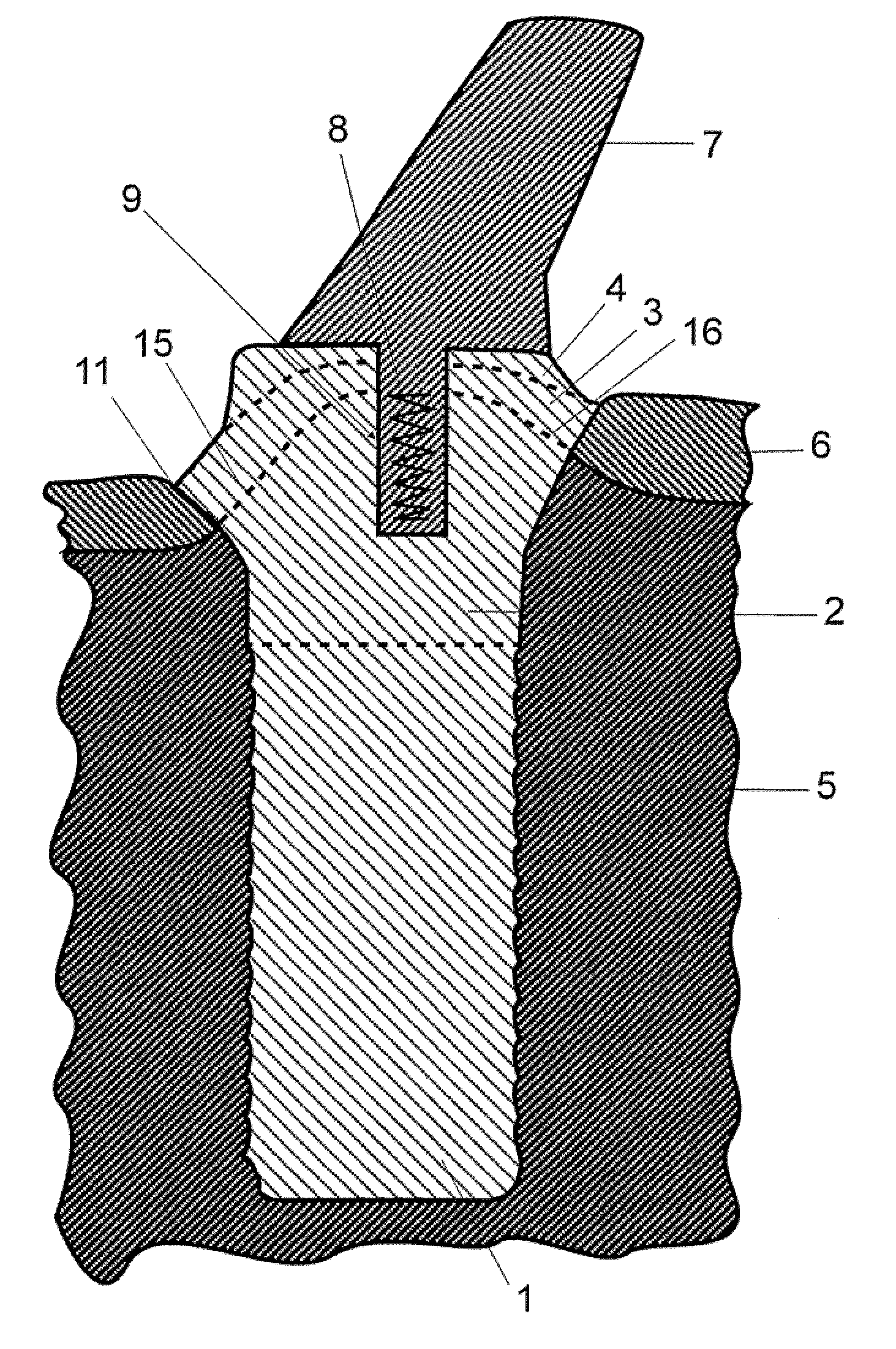Dental Implant System
a technology of implant system and gingiva, applied in dentistry, medical science, dentistry preparations, etc., can solve the problems of loss of implant, inability of gingiva to fuse, and hinder proper oral hygiene, and achieve mechanically stable and long-lasting connection, good fusing
- Summary
- Abstract
- Description
- Claims
- Application Information
AI Technical Summary
Benefits of technology
Problems solved by technology
Method used
Image
Examples
Embodiment Construction
[0061]FIG. 1 shows the cross-section, viewed in the palatinal direction, of a one-piece dental implant 100 made of titanium, with a crown 10 fixed to the implant 100. For better illustration, FIG. 2 shows a cross-section of the implant 100 with a prosthetic mounting post 7, but viewed in the direction of the jaw bone.
[0062]The implant comprises a lower enossal section 1, an upper enossal section 2, a transgingival section 3 and a transgingival implant head 4. To manufacture the implant, section 1 and section 2 are formed by means of a CAD / CAM, and section 3 and the transgingival implant head 4 either by means of a CAD / CAM or by manual working of a blank.
[0063]The lower enossal section 1, which sits deep within the jaw bone, has a honeycomb structure on its surface, with protrusions in each of the corners of the honeycomb. This proven structure permits optimal fusing of the implant 100 into the bone.
[0064]The upper enossal section 2, which is shaped such that its upper edge aligns ex...
PUM
 Login to View More
Login to View More Abstract
Description
Claims
Application Information
 Login to View More
Login to View More - R&D
- Intellectual Property
- Life Sciences
- Materials
- Tech Scout
- Unparalleled Data Quality
- Higher Quality Content
- 60% Fewer Hallucinations
Browse by: Latest US Patents, China's latest patents, Technical Efficacy Thesaurus, Application Domain, Technology Topic, Popular Technical Reports.
© 2025 PatSnap. All rights reserved.Legal|Privacy policy|Modern Slavery Act Transparency Statement|Sitemap|About US| Contact US: help@patsnap.com



